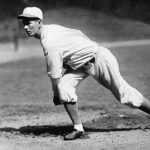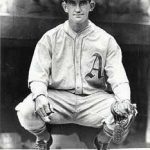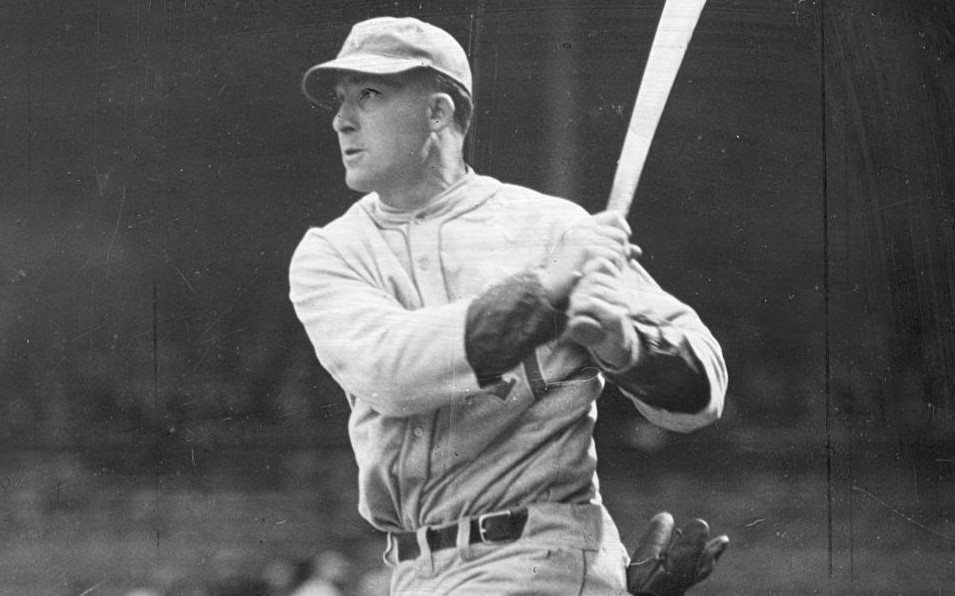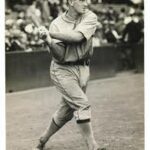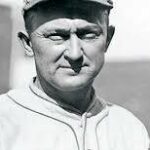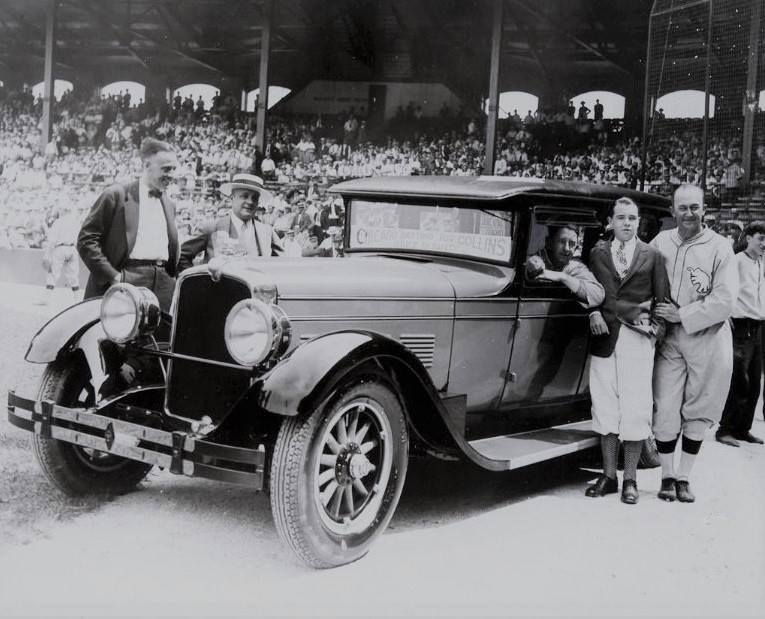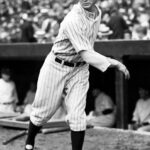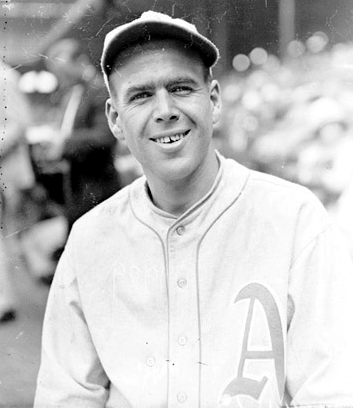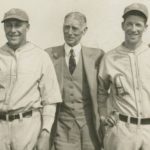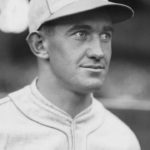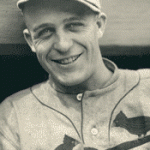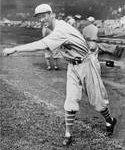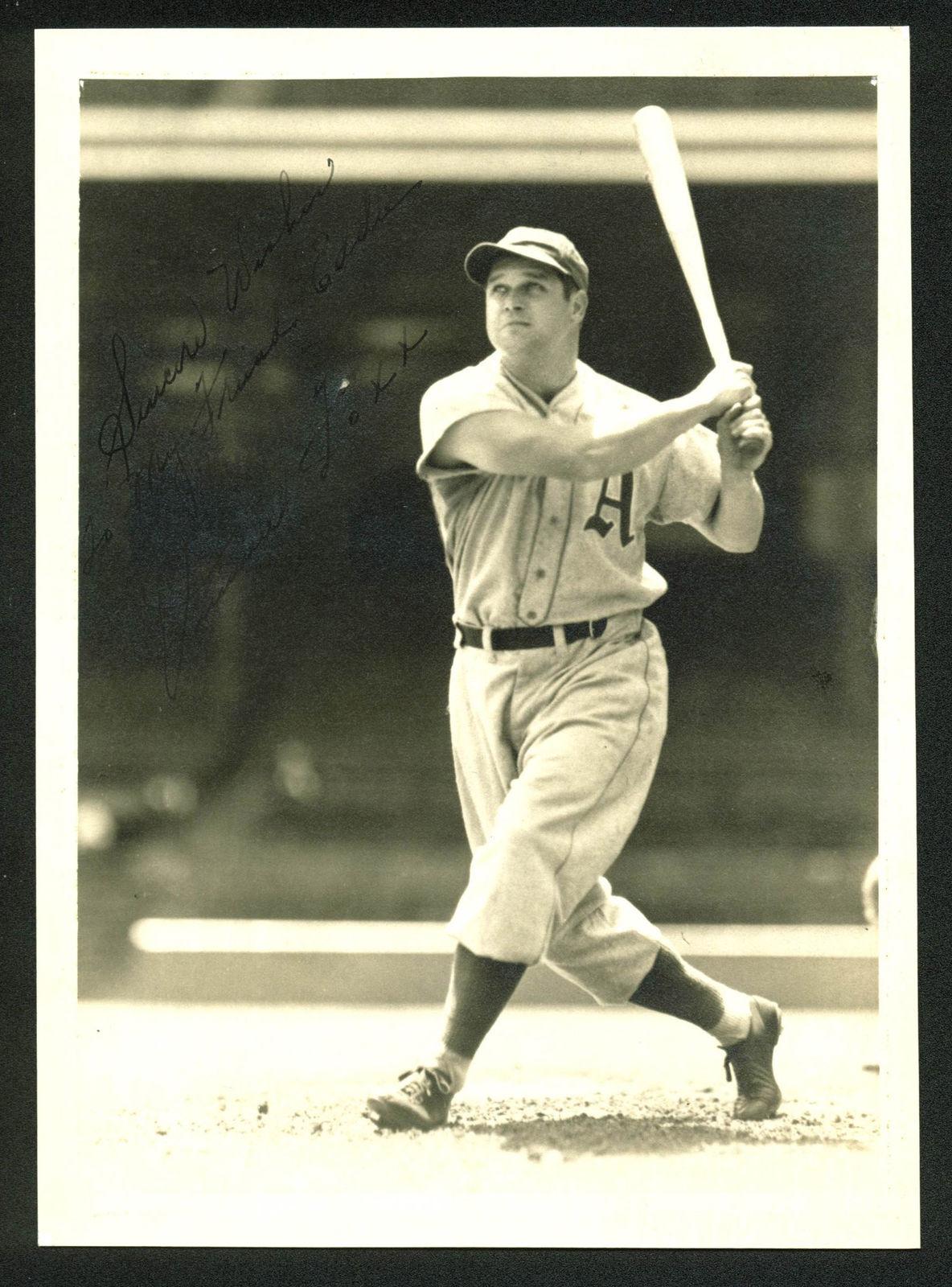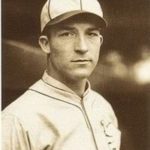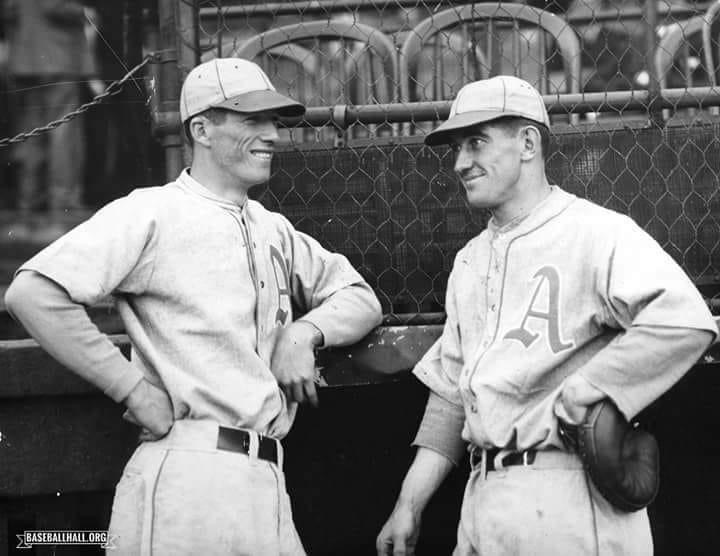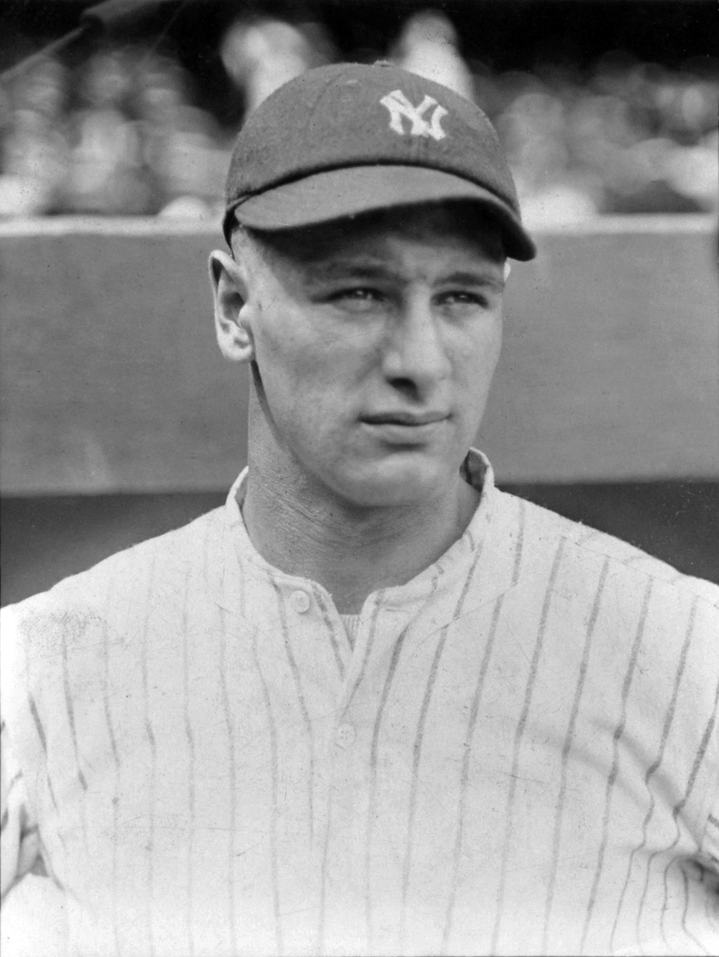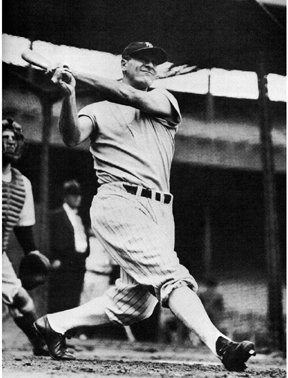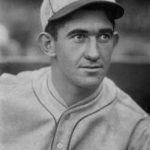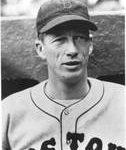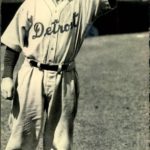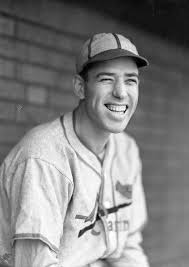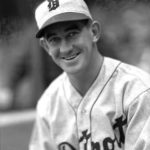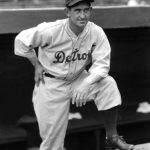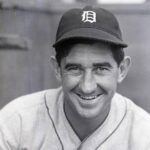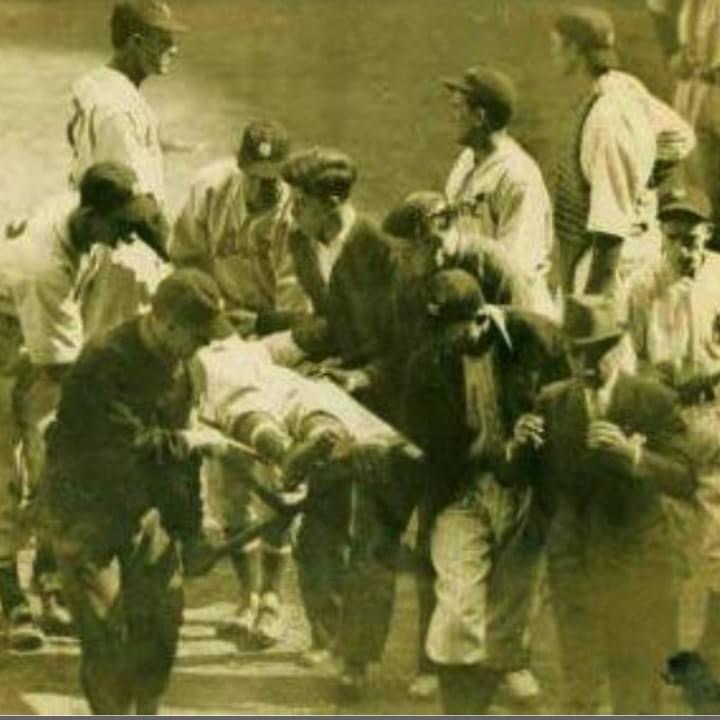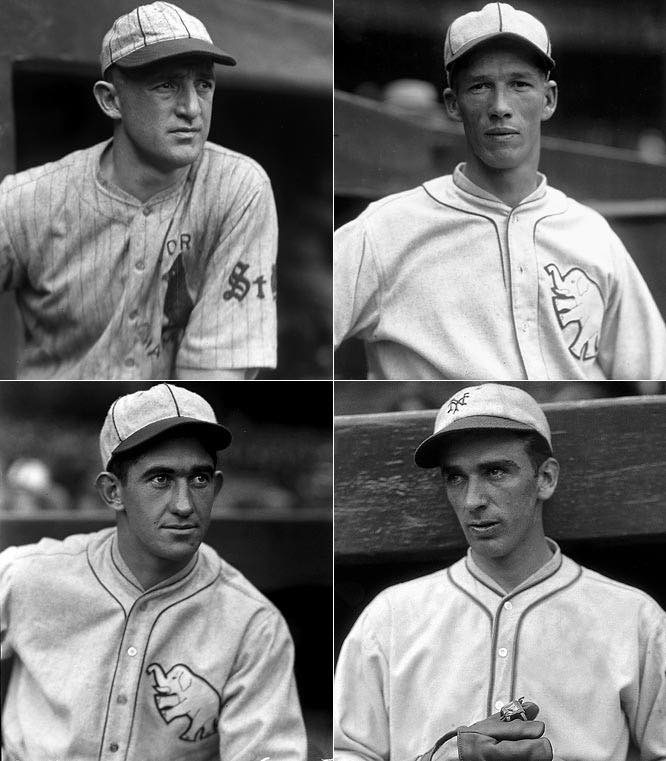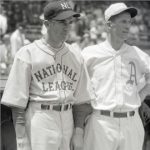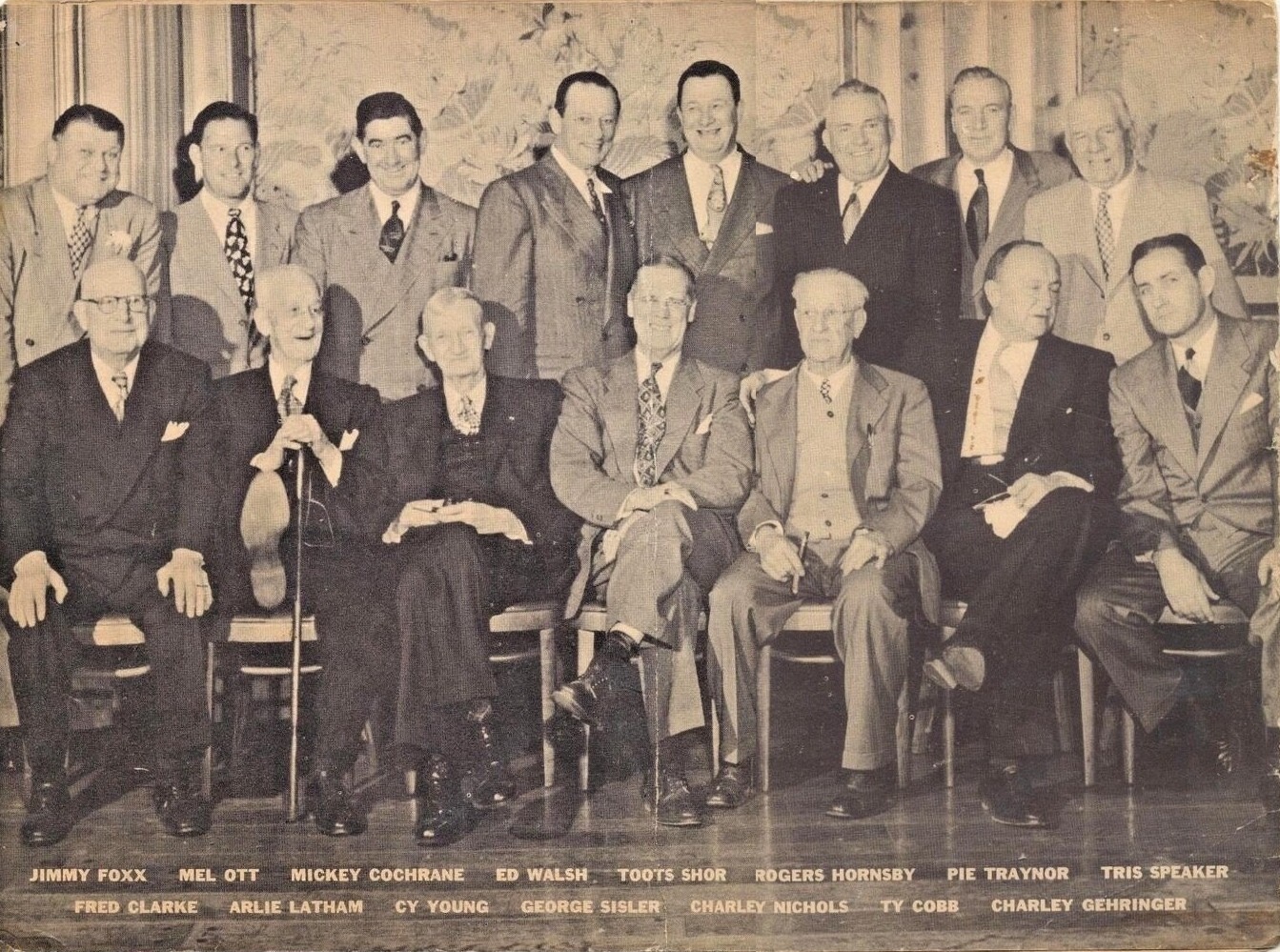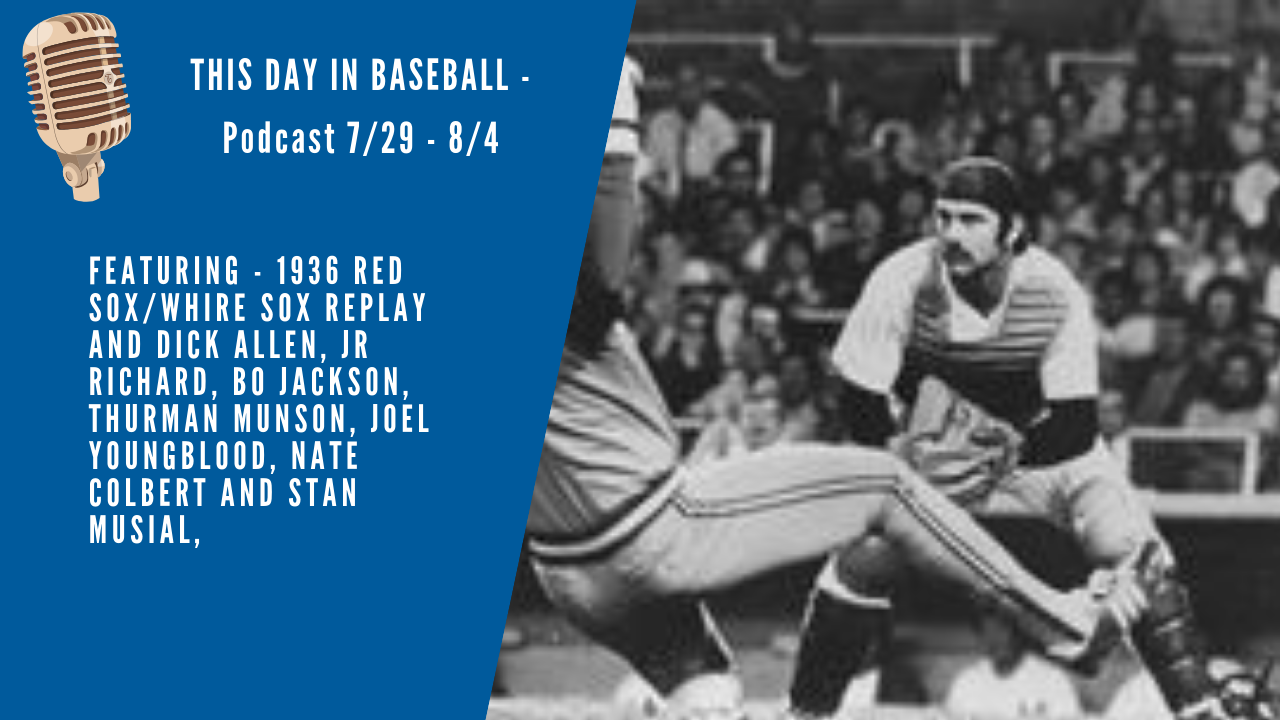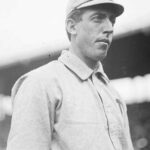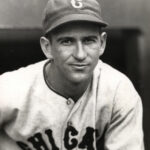Mickey Cochrane Stats & Facts
Mickey Cochrane
Position: Catcher
Bats: Left • Throws: Right
5-10, 180lb (178cm, 81kg)
Born: April 6, 1903 in Bridgewater, MA
Died: June 28, 1962 in Lake Forest, IL
Buried: Cremated
High School: Bridgewater HS (Bridgewater, MA)
School: Boston University (Boston, MA)
Debut: April 14, 1925 (6,154th in major league history)
vs. BOS 2 AB, 1 H, 0 HR, 0 RBI, 0 SB
Last Game: May 25, 1937
vs. NYY 2 AB, 1 H, 1 HR, 1 RBI, 0 SB
Hall of Fame: Inducted as Player in 1947. (Voted by BBWAA on 128/161 ballots)
View Mickey Cochrane’s Page at the Baseball Hall of Fame (plaque, photos, videos).
Full Name: Gordon Stanley Cochrane
Nicknames: Black Mike
View Player Info from the B-R Bullpen
View Player Bio from the SABR BioProject
Nine Other Players Who Debuted in 1925
Jimmie Foxx
Mickey Cochrane
Lefty Grove
Buddy Myer
Leo Durocher
Billy Rogell
Freddie Fitzsimmons
Mule Haas
Chuck Dressen
The Mickey Cochrane Teammate Team
C: Rudy York
1B: Hank Greenberg
2B: Charlie Gehringer
3B: Jimmie Foxx
SS: Joe Boley
LF: Goose Goslin
CF: Al Simmons
RF: Ty Cobb
SP: Lefty Grove
SP: Rube Walberg
SP: George Earnshaw
SP: Schoolboy Rowe
SP: Tommy Bridges
RP: Eddie Rommel
M: Connie Mack
Vintage Baseball HOT ON EBAY
Card Collections ENDING SOON ON EBAY
MOST WANTED ROOKIE CARDS
VINTAGE SPORTS TICKETS
Baseball Hall of Famers
Notable Events and Chronology for Mickey Cochrane Career
Biography
One of the greatest catchers in baseball history, Mickey Cochrane is considered by many historians of the game to be the finest receiver to play in the major leagues during the first half of the 20th century. An exceptional line-drive hitter, Cochrane posted the highest lifetime batting average (.320) and on-base percentage (.419) of any catcher with more than 5,000 career at-bats. An outstanding team leader as well, Cochrane played for five pennant-winning teams and three world championship squads in his 13 major league seasons. He helped lead Connie Mack’s Philadelphia Athletics to three straight pennants and two world championships from 1929 to 1931, before piloting the Detroit Tigers to back-to-back pennants in 1934 and 1935, and to victory in the 1935 World Series as the team’s player-manager.
The son of Northern Irish immigrant John Cochrane and Scottish immigrant Sadie Campbell, Gordon Stanley “Mickey” Cochrane was born on April 6, 1903 in Bridgewater, Massachusetts. After graduating from Bridgewater High School, Cochrane attended Boston University, where he played five sports. Cochrane exhibited his outstanding athleticism and leadership skills on the football field, serving his team at quarterback, punter, and running back. The extremely competitive and hot-tempered Cochrane first acquired his nickname “Black Mike” in college, often erupting into fits of rage when either he or one of his teammates failed to perform up to expectations.
Cochrane got his start in professional baseball while still in college, batting .327 for the Dover Senators of the Eastern Shore League in 1923. He spent the following season with Portland in the Pacific Coast League, before joining the Philadelphia Athletics at the start of the 1925 campaign. A poor defensive receiver when he first arrived in the major leagues, Cochrane honed his catching skills under the watchful eye of Cy Perkins, the A’s incumbent at the position. Although it took Cochrane some time to develop into an above average defender, he excelled as a hitter from the very beginning, posting a .331 batting average in his first full season in the majors. Injuries limited the young receiver to 120 games in 1926, causing his batting average to fall to .273. However, Cochrane rebounded the following year to bat .338, compile a .409 on-base percentage, drive in 80 runs, and score 80 others.
Cochrane batted .293 and scored 92 runs in 1928, capturing A.L. MVP honors despite hitting only 10 home runs and knocking in just 57 runs. The lefthanded hitting catcher’s fiery temperament and leadership skills impressed the baseball writers who selected him. Cochrane’s MVP qualifications were further enhanced by Philadelphia’s strong second-place finish, and by the ineligible status of both Babe Ruth and Lou Gehrig of the pennant-winning Yankees (neither man was eligible to win the award at the time since they each had previously been named league MVP).
Cochrane developed into one of the American League’s top offensive players over the course of the next three seasons, serving as a catalyst on Philadelphia’s championship teams of 1929, 1930, and 1931. He batted .331 in the first of those years, while knocking in 95 runs and scoring 113 times himself. Cochrane posted a career high mark of .357 the following season, driving in 85 runs and scoring 110 others. He performed brilliantly again in 1931, batting .349, hitting 17 home runs, knocking in 89 runs, and scoring 87
others.
Cochrane’s tremendous offensive versatility enabled Manager Mack to insert him into any number of places in the batting order, although he typically batted third in the lineup, right before righthanded sluggers Al Simmons and Jimmie Foxx. Cochrane had surprising speed for a catcher, handled the bat extremely well, and annually compiled an on-base percentage that exceeded .400, making him an excellent third-place hitter.
Equally important was the receiver’s ability to handle the A’s pitching staff, which included the temperamental Lefty Grove. Perhaps Cochrane understood Grove better than most since he shared the lefthander’s volatile disposition, competitive nature, and strong distaste for losing. Outfielder Doc Cramer, who played with both men on the A’s, discussed the fierce temper of his former teammates when he said, “Lose a one-to-nothing game, and you didn’t want to get into the clubhouse with Grove and Cochrane. You’d be ducking stools and gloves and bats and whatever else would fly.”
Although “Black Mike” was known more for his hitting and leadership skills, he gradually developed into a solid defensive receiver. After committing a career-high 25 errors in 1928, he finished in double-digits in miscues only one other time the remainder of his career. He ended up leading American League catchers six times in putouts, and twice each in double plays, assists, and fielding percentage. Cochrane also developed a reputation second-to-none in terms of his ability to block home plate. Doc Cramer discussed that particular aspect of the catcher’s game by saying, “There were few things as exciting as watching somebody trying to get in there on a close play with Cochrane. Home plate was his, you see. You had to take it away from him. Tough? Just the same as a piece of flint.”
Still, Cochrane received much of the blame for Philadelphia’s loss to St. Louis in the 1931 World Series, after the Cardinals stole eight bases during the Fall Classic, including five by Pepper Martin. However, the A’s pitchers must be held at least partly responsible due to their inability to properly hold on the St. Louis baserunners.
Although the A’s failed to repeat as American League champions in 1932, Cochrane had the most productive offensive season of his career. In addition to batting .293, walking 100 times, and compiling a .412 on-base percentage, he established new career highs with 23 home runs, 112 runs batted in, and 118 runs scored. Cochrane followed that up by batting .322 and scoring 104 runs in 1933, while also posting a league-leading .459 on-base percentage.
Connie Mack didn’t wish to part with Cochrane when he started to disassemble his team for financial reasons after the conclusion of the 1932 campaign, but he finally relented when his catcher expressed a desire to manage the following year. Mack sold Cochrane to the Detroit Tigers prior to the start of the 1934 season, and the receiver led his new team to the American League pennant in his first year as a player-manager. Although Cochrane hit only two home runs, knocked in just 76 runs, and scored only 74 others, his .320 batting average and exceptional leadership skills convinced the MVP voters to select him over Lou Gehrig in the balloting for the annual award, even though the Yankee first baseman won the A.L. Triple Crown. The Tigers subsequently lost the World Series to the Cardinals in seven games, with their catcher posting a .214 batting average during the Fall Classic.
Detroit captured the American League pennant again in 1935, with Cochrane batting .319 and scoring 93 runs. This time, though, the Tigers defeated Chicago in the World Series, with Cochrane compiling a .292 batting average during the six-game Series.
The 1935 campaign turned out to be Cochrane’s last full season in the majors. Injuries limited the 33-year-old receiver to only 44 games in 1936, and Cochrane’s career came to
an abrupt end the following year when he was hit in the head with a fastball thrown by New York Yankee hurler Bump Hadley. The pitch fractured Cochrane’s skull, causing him to lie unconscious in the hospital for ten days before finally awakening. Ordered by doctors not to play baseball again, Cochrane returned to the Detroit dugout to manage the team the remainder of the year, but his playing days were over. He continued to manage the Tigers until the team replaced him at the helm midway through the following year. Cochrane ended his managerial career with a record of 348-250, for a .582 winning percentage. In addition to his .320 batting average and .419 on-base percentage, Cochrane’s career numbers as a player include 119 home runs, 832 runs batted in, 1,041 runs scored, and only 217 strikeouts in more than 6,200 total plate appearances. He batted over .330 on five separate occasions, scored more than 100 runs four times, and compiled an on-base percentage in excess of .400 in 10 of his 13 years in the league.
After leaving the game as an active player and manager, Cochrane spent time as General Manager of the Athletics, served briefly as a scout for the Yankees and Tigers, and also coached for Connie Mack on the 1950 Philadelphia Athletics. Cochrane also served in the United States Navy during World War II, managing the Service All-Stars at Cleveland on July 7, 1942, piloting the Great Lakes team from 1942 to 1944, and heading the fleet recreational center in Guam during the final year of the war.
In 1947, Cochrane became the first catcher elected into the Baseball Hall of Fame, preceding his long-time rival Bill Dickey, who joined him in Cooperstown seven years later. A heavy smoker throughout most of his adult life, Cochrane died of lymphatic cancer in 1962 in Lake Forest, Illinois, at the age of 59.
@ET-DC@eyJkeW5hbWljIjp0cnVlLCJjb250ZW50IjoicG9zdF90YWdzIiwic2V0dGluZ3MiOnsiYmVmb3JlIjoiTGVhcm4gTW9yZSBhYm91dCB0aGUgdGVhbXMsIHBsYXllcnMsIGJhbGwgcGFya3MgYW5kIGV2ZW50cyB0aGF0IGhhcHBlbmVkIG9uIHRoaXMgZGF0ZSBpbiBoaXN0b3J5IC0gLSAtIC0gLSAtIC0gIiwiYWZ0ZXIiOiIiLCJsaW5rX3RvX3Rlcm1fcGFnZSI6Im9uIiwic2VwYXJhdG9yIjoiIHwgIiwiY2F0ZWdvcnlfdHlwZSI6InBvc3RfdGFnIn19@
Vintage Baseball HOT ON EBAY
Card Collections ENDING SOON ON EBAY
MOST WANTED ROOKIE CARDS
VINTAGE SPORTS TICKETS
Baseball Hall of Famers
Factoids, Quotes, Milestones and Odd Facts
Played For
Philadelphia Athletics (1925-1933)
Detroit Tigers (1934-1937)
Managed
Detroit Tigers (1934-1938)
Cochrane posted a .582 winning percentage (348-250), leading the Tigers to two pennants and their first World Series title, in 1935… Cochrane managed the Great Lakes Naval Academy baseball team during World War II, leading them to 33 consecutive wins at one point. His team included Johnny Mize, Schoolboy Rowe, and Virgil Trucks.
Similar: Ivan Rodriguez
Linked: Pepper Martin, who terrorized Cochrane during the 1931 World Series, stealing five bases. In 1934, Martin added two more steals against Cochrane.
Best Season, 1933
In other seasons he collected more hits and RBI, but in 1933 Cochrane put it all together, as he batted .322 with a career high .459 OBP (which led baseball). He also slugged .515 and scored 104 runs in just 130 games.
Awards and Honors
1928 AL MVP
1934 AL MVP
All-Star Selections
Post-Season Appearances
1929 World Series
1930 World Series
1931 World Series
1934 World Series
1935 World Series
Where He Played: 1,451 games at catcher, and one in the outfield.
Minor League Experience
1923: Dover (Eastern Shore Loop)
1924: Portland (Pacific Coast League)
Big League Debut: April 14, 1925
In his debut, Cochrane caught Lefty Grove, who was also making his major league debut. It’s the only time two future Hall of Famers debuted as teammates as a battery in the same game.
Feats: On May 21, 1925, just five weeks into his big league career, Cochrane belted three homers in one game… Cochrane twice hit for the cycle: on July 22, 1932, and August 2, 1933.
Injuries and Explanation for Missed Playing Time
On May 25, 1937, Yankee hurler Bump Hadley hit Cochrane in the head with a pitch, sending the Tiger player/manager to the ground in a heap. The ball hit Cochrane so hard that it left a visible dent in his skull. Cochrane was in critical condition for nearly two days, and was given his last rights before he rallied to recover. After missing several weeks, Mickey returned to the Tiger bench and managed the team into the 1938 season. Having been plunked by pitches before, and fearful that he wouldn’t be able to get out of the way of another inside pitch, Cochrane retired as a player.
Transactions
December 12, 1933: Traded by the Philadelphia Athletics to the Detroit Tigers for Johnny Pasek and $100000 cash. It was one of the best trades the Tigers ever made.
Data courtesy of Restrosheet.org
Three-Homer Games with Least HR in that Season
These players clubbed three home runs in a single game, but failed to hit as many as 10 homers that season:
Darnell Coles…07/05/1994…4 HR
Bobby Estalella…09/04/1997…4 HR
Guy Hecker…08/15/1886…4 HR
Bill Glynn…07/05/1954…5 HR
Jack Manning…10/09/1884…5 HR
Tom McCreery…07/12/1897…5 HR
Clyde McCullough…07/26/1942…5 HR
Roman Mejias…05/04/1958…5 HR
Freddie Patek…06/20/1980…5 HR
Juan Beniquez…06/12/1986…6 HR
Mickey Cochrane…05/21/1925…6 HR
Merv Connors…09/17/1938…6 HR
Todd Hollandsworth…04/15/2001…6 HR
Don Leppert…04/11/1963…6 HR
Babe Ruth…05/25/1935…6 HR
Cory Snyder…04/17/1994…6 HR
Jim Tobin…05/13/1942…6 HR
Mike Lum…07/03/1970…7 HR
George Mitterwald…04/17/1974…7 HR
Jim Pendleton…08/30/1953…7 HR
Pete Rose…04/29/1978…7 HR
Frank Shugart…05/10/1894…7 HR
Jason Varitek…05/20/2001…7 HR
Jake Beckley…09/26/1897…8 HR
Tommy Brown…09/18/1950…8 HR
Hal Lee…07/06/1934…8 HR
Gene Oliver…07/30/1966…8 HR
Tuffy Rhodes…04/04/1994…8 HR
Leroy Stanton…07/10/1973…8 HR
Bob Thurman…08/18/1956…8 HR
Del Wilber…08/27/1951…8 HR
Dan Ford…07/20/1983…9 HR
Joe Lahoud…06/11/1969…9 HR
Teeth-Breaking Blow
While on tour with American All-Stars in Japan in 1931, Cochrane hit one of the longest home runs of his career. The blast came in Sendai, Japan and traveled an estimated 410 feet. The ball struck a Japanases fan in the mouth and busted his front teeth. The story goes that before Cochrane could apologize, embarrassed Japanases officials paid the fan 50 yen to leave the park and get false teeth.
Quotes From Cochrane
“This is the happiest day in my life. It was the most sensational series I have ever played in. My greatest thrill was scoring that winning run.” — Tigers player/manager Mickey Cochrane after scoring the winning run in the 1935 World Series.
All-Star Selections
1934 AL
1935 AL
Replaced
Cy Perkins, a fine defensive catcher, who had been the Athletics’ starter since 1918.
Replaced By
23-year old Rudy York, who was pressed into duty behind the plate after Mickey was beaned on May 25, 1937.
Best Strength as a Player
Hitting
Largest Weakness as a Player
None
Other Resources & Links
Coming Soon
If you would like to add a link or add information for player pages, please contact us here.


